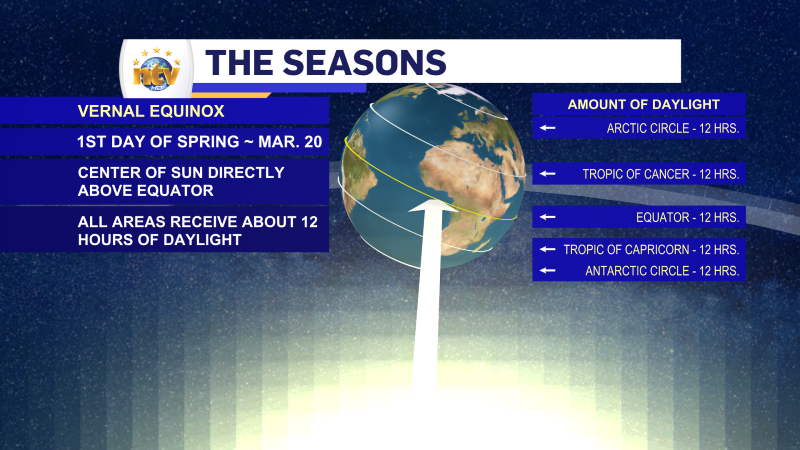
Spring is a time eagerly awaited by many as it brings warmer weather (eventually), blooming flowers, and longer days. However, have you ever wondered why the date of spring seems to shift between the 20th and 21st of March? Let’s delve into the astronomical and calendar intricacies that govern the timing of this seasonal transition.
The date of spring’s arrival is tied to a celestial event known as the vernal equinox. During the equinox, which occurs twice a year, the tilt of Earth’s axis is such that the plane of the equator passes through the center of the Sun. This results in nearly equal lengths of day and night across the globe, marking the official start of spring in the Northern Hemisphere. There are also two solstices a year, the winter and summer. The winter solstice occurs on the shortest day of the year and summer the longest.

The movement of Earth around the Sun isn’t precisely synchronized with our calendar system. Earth takes approximately 365.24 days to complete its orbit, leading to a misalignment between astronomical events and our 365-day calendar year. To address this discrepancy, we have leap years, where an extra day (February 29th) is added every four years to keep our calendar in sync with Earth’s orbit. This year was a leap year, so spring would then be one day earlier than is typical.
The date of the vernal (spring) equinox varies slightly from year to year due to these astronomical complexities. The Gregorian calendar, which most of the world follows, adjusts for this by defining the vernal equinox as March 20th or 21st, depending on the year. This ensures that spring consistently begins around the same time each year relative to our calendar.
It’s important to note that over longer periods, Earth’s axial precession, a slow wobble in its axis, can also influence the timing of equinoxes and solstices. This phenomenon causes a gradual shift in the orientation of Earth’s axis over a cycle of about 26,000 years, impacting the timing of seasonal events over millennia.
In essence, the fluctuation in the date of spring between the 20th and 21st of March is a result of Earth’s orbit around the Sun, the adjustments made by the Gregorian calendar, and the long-term astronomical processes like axial precession. While these complexities may seem subtle, they underscore the intricies of celestial bodies that govern the changing of seasons on our planet.
This chart from Timeanddate.com shows how the date of spring has fluctuated between those two dates over time. In fact, if you look at the period between 1950 and 1999 at St. John’s, you will see it hasn’t always been on the 21st. The image below is a sampling, you can use the link above for the source.







